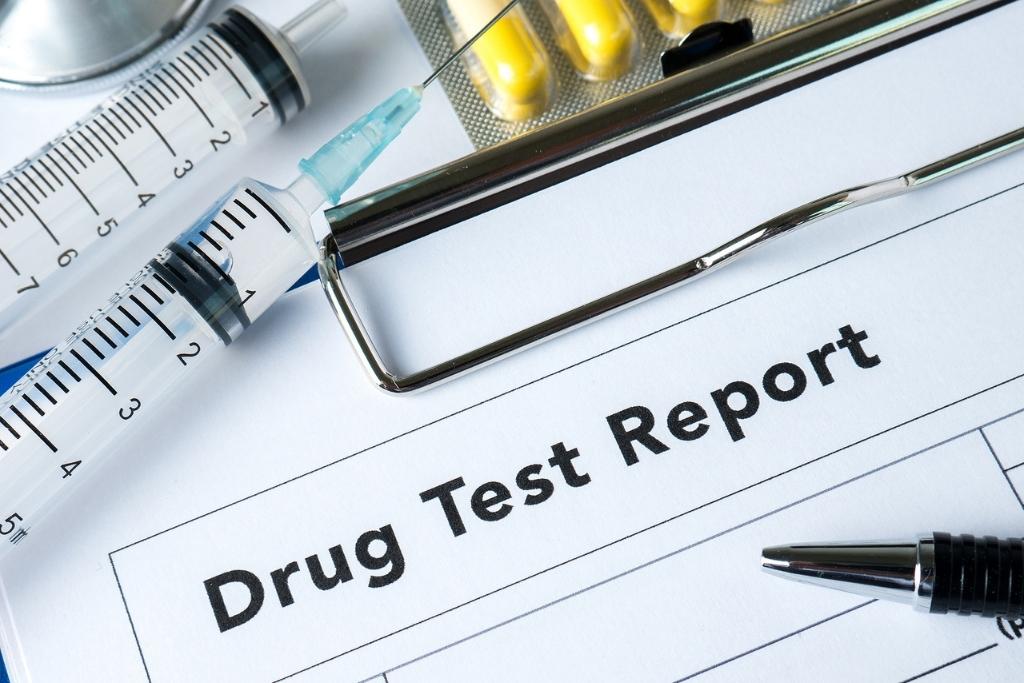Understanding the Dangers of Opioids
The opioid crisis continues to evolve, and Percocet and fentanyl are two of the most widely recognized opioid painkillers. While both are prescribed to manage pain, they differ significantly in potency, risks, and addiction potential.
A growing concern is the rise of illicit fentanyl, which is often mixed into counterfeit Percocet pills, leading to a surge in overdose deaths. Understanding these drugs and their dangers is essential for anyone seeking information on opioid safety, detox, and treatment options.
What Is Percocet?
Percocet is a prescription opioid pain reliever that combines:
- Oxycodone, a semi-synthetic opioid used for moderate to severe pain relief
- Acetaminophen, the active ingredient in Tylenol, which enhances pain relief and reduces fever
Medical Uses of Percocet
Percocet is commonly prescribed for:
- Post-surgical pain
- Injury-related pain
- Chronic pain conditions (short-term use)
Side Effects of Percocet
While effective for pain management, Percocet can cause side effects such as:
- Drowsiness
- Nausea and vomiting
- Dizziness
- Constipation
- Slowed breathing in high doses
Since Percocet contains acetaminophen, excessive use can lead to liver damage, particularly in cases of long-term misuse.
What Is Fentanyl?
Fentanyl is a synthetic opioid that is 50 to 100 times more potent than morphine. It is prescribed for severe pain management, particularly in cases where other opioids are insufficient.
Medical Uses of Fentanyl
Fentanyl is available in various forms, including:
- Patches (Duragesic) for chronic pain
- Lozenges and tablets for breakthrough pain
- Injectable forms used in hospitals
However, illicit fentanyl is a leading contributor to opioid overdose deaths. Unlike prescription fentanyl, illicit fentanyl is frequently found in counterfeit pills, heroin, and other street drugs, making it far more dangerous.
Key Differences Between Percocet and Fentanyl
| Feature | Percocet | Fentanyl |
| Potency | Less potent | 50-100 times stronger than morphine |
| Medical Use | Prescribed for moderate-severe pain | Used for severe, post-surgical, or cancer pain |
| Form | Tablets (oxycodone + acetaminophen) | Patches, injections, lozenges, illicit powder & pills |
| Risk of Overdose | High, but lower than fentanyl | Extremely high—micrograms can be fatal |
| Illicit Dangers | Counterfeit Percocet pills may contain fentanyl | Illicitly manufactured fentanyl is a leading cause of overdose deaths |
Illicit Fentanyl in Counterfeit Percocet Pills
One of the greatest dangers today is the widespread availability of fake Percocet pills laced with fentanyl. These counterfeit pills often look identical to real pharmaceutical Percocet but contain lethal amounts of fentanyl.
Why Is This Dangerous?
- Many individuals believe they are taking a prescription opioid when they are unknowingly consuming fentanyl.
- Illicit fentanyl is up to 50 times stronger than heroin, increasing the risk of instant overdose.
- Counterfeit pills are often sold through social media, street dealers, or online marketplaces, making them more accessible to young adults and teens.
How to Identify Counterfeit Percocet
- Pills with inconsistent markings or colors
- Pills that look overly shiny, crumbly, or powdery
- Any medication purchased outside of a licensed pharmacy
Fentanyl test strips can sometimes detect contamination, but the safest option is to avoid all non-prescribed pills.
Addiction Potential: Is Percocet or Fentanyl More Addictive?
Both Percocet and fentanyl have a high potential for addiction, but fentanyl’s greater potency makes it:
- More addictive
- Harder to quit
- More dangerous to detox from without medical supervision
Signs of Opioid Addiction
- Increased tolerance, requiring higher doses for the same effect
- Withdrawal symptoms when stopping use
- Using outside of a prescription
- Craving the drug regularly
- Neglecting responsibilities due to drug use
Once opioid dependence develops, withdrawal can be painful and dangerous, requiring professional medical detox.
How Long Do Percocet and Fentanyl Stay in Your System?
| Drug | Detection Time in Urine | Detection Time in Blood |
| Percocet (Oxycodone) | 1-3 days | Up to 24 hours |
| Fentanyl | 1-3 days | 12-48 hours |
Fentanyl has a shorter half-life but causes long-lasting withdrawal symptoms, making detox particularly challenging.
Why Medical Detox Is Critical for Opioid Withdrawal
Quitting opioids suddenly can cause severe withdrawal symptoms, including:
- Anxiety and agitation
- Muscle pain and cramping
- Vomiting, diarrhea, and dehydration
- Sweating and chills
Medical detox provides professional supervision and medical interventions to ease withdrawal and ensure safety.
Waismann Method: The Leading Medical Opioid Detox
- Medically supervised detox in a full-service hospital
- Sedation-assisted detox to minimize withdrawal symptoms
- Custom-tailored treatment based on individual health needs
- Post-detox care at Domus Retreat for stabilization
Unlike traditional rehab programs that use long-term opioid replacement therapy, Waismann Method helps patients detox safely and effectively without unnecessary suffering.
Conclusion: Understanding the Risks & Choosing the Best Treatment
Both Percocet and fentanyl are powerful opioids, but illicit fentanyl has significantly increased overdose risks. Whether struggling with prescription opioid dependence or illicit fentanyl use, the safest path to recovery is medically supervised detox.
If you or a loved one needs professional opioid detox, Waismann Method provides one of the safest and most effective treatments available.
Contact Waismann Method Today
Call: (800) 423-2482
Frequently Asked Questions about Percocet vs. Fentanyl
What is the difference between Percocet and fentanyl?
Percocet is a prescription pain reliever that combines oxycodone and acetaminophen, while fentanyl is a synthetic opioid that is 50-100 times stronger than morphine. Fentanyl is used for severe pain, whereas Percocet is prescribed for moderate to severe pain.
Is fentanyl stronger than Percocet?
Yes. Fentanyl is far more potent than Percocet. While oxycodone (the opioid in Percocet) is stronger than morphine, fentanyl is 50 to 100 times more powerful than morphine, making it significantly stronger than Percocet.
Why is fentanyl more dangerous than Percocet?
Fentanyl is highly potent, meaning even small amounts can cause respiratory failure and overdose. It is often illicitly manufactured and mixed into counterfeit pills, leading to a high risk of accidental overdose.
How long does Percocet stay in your system compared to fentanyl?
Percocet (Oxycodone): Stays in urine for 1-3 days and in blood for up to 24 hours
Fentanyl: Stays in urine for 1-3 days but can be detected in blood for 12-48 hours
Fentanyl has a shorter half-life but causes longer-lasting withdrawal symptoms.
Can you overdose on Percocet like you can with fentanyl?
Yes, but fentanyl overdose is far more likely due to its extreme potency. While Percocet overdose is dangerous, fentanyl can cause fatal respiratory depression in even tiny doses, especially when mixed with other drugs.
How can you tell if Percocet is laced with fentanyl?
The only way to confirm if Percocet contains fentanyl is by using fentanyl test strips. However, fake Percocet pills are often indistinguishable from real ones and are frequently sold on the street or online.
How long does it take to develop a dependence on fentanyl vs. Percocet?
Dependence can develop in as little as a few days to weeks for both drugs. However, fentanyl’s higher potency makes it easier to become addicted and more difficult to stop without medical help.
What is the best treatment for fentanyl or Percocet addiction?
The best treatment is a medically supervised detox followed by comprehensive aftercare. Unlike traditional rehab centers, Waismann Method provides opioid detox in a hospital, ensuring the safest and most effective treatment available.
Can oxycodone be mistaken for fentanyl?
Yes, oxycodone can be mistaken for fentanyl, especially in illicit markets. Counterfeit pills designed to look like legitimate oxycodone tablets (e.g., OxyContin or Percocet) often contain lethal amounts of fentanyl. Drug enforcement agencies have found fentanyl-laced counterfeit oxycodone pills, making it essential to only obtain prescription medications from licensed pharmacies.
What does 512 mean on a pill?
A white round pill with “512” imprinted on it is a legitimate prescription oxycodone/acetaminophen (Percocet 5/325 mg) tablet. It contains 5 mg of oxycodone and 325 mg of acetaminophen for pain relief. However, counterfeit versions may exist, so verifying pills through a licensed pharmacy is crucial.
What is the strongest pain medication for humans?
The strongest pain medications available for humans are opioids, with fentanyl being the most potent. Fentanyl is 50 to 100 times stronger than morphine and is used for severe pain management, particularly for cancer patients or post-surgical pain. Other strong pain medications include hydromorphone (Dilaudid), oxymorphone (Opana), and sufentanil. Due to their high potency and overdose risk, these medications are strictly regulated.
What is the street name for Percocet?
Percocet has several street names, including:
– Perks
– 512s (referring to the imprint on some oxycodone/acetaminophen pills)
– Percs
– Roxies (though this term more commonly refers to Roxicodone, which is pure oxycodone)
Street versions of Percocet are often counterfeit and may contain fentanyl, increasing the risk of overdose.
What are the withdrawal symptoms of fentanyl vs. Percocet?
Fentanyl withdrawal: Severe muscle pain, cold flashes, rapid heartbeat, excessive sweating, extreme cravings, and prolonged symptoms
Percocet withdrawal: Flu-like symptoms, nausea, vomiting, diarrhea, restlessness, and body aches
Fentanyl withdrawal is often more intense and lasts longer due to its high potency.
What is the safest way to detox from Percocet or fentanyl?
The safest way to detox is under medical supervision in a hospital setting. The Waismann Method offers rapid detox under sedation, helping patients eliminate opioids safely while minimizing withdrawal symptoms.
Sources:
- Facts Fight Fentanyl: Comprehensive information about fentanyl, including its potency, medical uses, and associated risks.
- DEA Counterfeit Pills Fact Sheet: The prevalence of counterfeit pills, their appearance, and the dangers they pose, particularly those laced with fentanyl.
- DEA One Pill Can Kill Campaign: Insights into the dangers of counterfeit prescription pills containing fentanyl and offers resources for public awareness.
- CDC Report on Drug Overdose Deaths Involving Fentanyl: Statistical data on overdose deaths related to fentanyl, highlighting the severity of the opioid crisis.
- MATTERS Network: Newest educational video on how to respond to an opioid overdose














